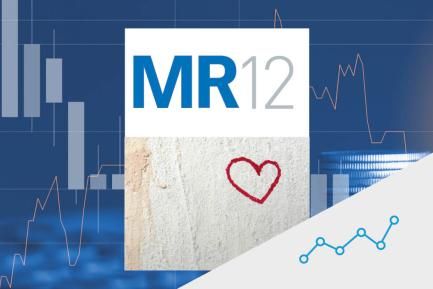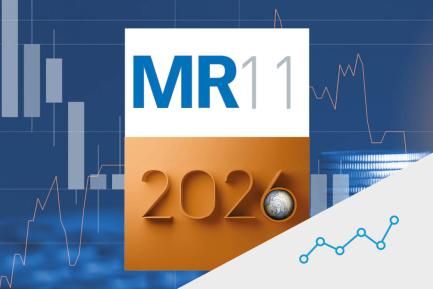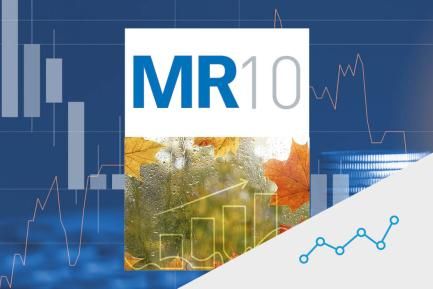
The financial markets reassess the outlook
Investors bet on reflation
In the year to date, financial asset prices have been adjusting to what has been called a reflation scenario, that is, the expectation that global economic activity will enjoy a sustained revival and that inflation will leave its weakness behind and become more buoyant, both backed by the recent fiscal and monetary stimuli. Thus, on the one hand, optimism about economic growth has driven up stocks and other risky assets such as commodities, while on the other hand, expectations of higher inflation have led to a rise in market interest rates, especially in the long tranches of the curves. Although in the short term the global economy remains severely restricted by the pandemic, this readjustment of investor expectations gained momentum in the financial markets in February, leading to significant rallies in sovereign yields and most commodity prices. Moreover, in the stock markets, this adjustment favoured the sectors most sensitive to the business cycle, which pushed up the major stock market indices while prices in other sectors were somewhat more wavering. Initially, the major central banks did not appear to be concerned about the rise in market interest rates, noting that the movement reflects an improvement in the economic outlook. However, when rates also began to be stressed in real terms, in a month without monetary policy meetings, various members of the Fed and the ECB took advantage of their public interventions to recall the need and their intention to maintain accommodative financial conditions in an economic environment that remains fragile and uncertain.

Treasury interest rates surge to pre-pandemic levels
Driven by expectations of reflation in the financial markets, the yields of US sovereign bonds (so-called treasuries) surged in February, mainly in the medium- and long-term maturities, continuing the rise registered in January and approaching pre-pandemic levels. Much of the increase in the year to date was supported by heightened inflation expectations, with investors’ eyes focused on the Biden administration’s proposal for a new fiscal package. However, since mid-February, nominal interest rates continued to rise as inflation expectations tempered, putting stress on real interest rates, which had previously been relatively stable. In the face of this stress, the chair of the Federal Reserve, Jerome Powell, took advantage of his regular appearance before the US Senate
to reiterate the central bank’s intention to maintain an accommodative monetary policy and recalled that the US’ economic recovery will take time to approach the Fed’s objectives.

In Europe, sovereign yields also reflect the optimism of the medium-term outlook
The increase in interest rates observed in the US yield curve also drove up the euro area’s long-term interest rates, both in the core and in the periphery. As occurred in the US, European real interest rates also began to be stressed in February. In response, various ECB members sent out messages of reassurance, pointing out that this trend is being closely monitored by the ECB, reiterating the need to maintain highly dovish financial conditions and recalling that the central bank has the capacity and the will to act if conditions begin to tighten. Meanwhile, in the euro area periphery, Spain and Portugal’s risk premiums remained contained despite suffering a slight increase, while Italy’s continued to decline following the formation of the new government with Mario Draghi as prime minister, temporarily falling below 100 bps (a low point not seen since 2015).


Sector rotation sets the pace in the stock markets
The main stock market indices began the month with significant gains, driven by higher-than-expected corporate earnings in Q4 2020, as well as the resilience of economic activity and the expectation that it will become more sustained over the coming quarters. Thus, the sectors most sensitive to the business cycle showed the best performance. Nevertheless, the sharp rise in sovereign yields on both sides of the Atlantic generated doubts among equity market investors. All in all, the greater relative weight of the cyclical sectors in the euro area indices resulted in them ending the month with widespread gains (EuroStoxx 50 +4.5%, DAX +2.6%, CAC +5.6%, MIB +5.9%, Ibex 35 +6.0%, and PSI-20 –1.9%). In the US, meanwhile, the sectoral composition was less favourable and the indices closed the month with a more mixed tone (S&P 500 +2.6% and Nasdaq –0.1%). In emerging countries, stock markets registered widespread losses in Latin America (–3.1%) and a more cautious tone in emerging Asia (+0.9%) due to concerns about the rise in US interest rates.

The rise of commodity prices fuels inflation expectations
Optimism about the global recovery also spread to the commodity market, where oil and industrial metals led the charge, isolated from investors’ fears. On the one hand, the price of a barrel of Brent rose to briefly touch 67 dollars for the first time in 13 months. This rally was supported, on the supply side, by the ongoing production cuts by OPEC and its allies and the temporary decline in inventories in the US (in the midst of a cold spell), as well as being favoured by the upward revision of expectations for oil demand in the coming quarters. On the other hand, industrial metals also joined the rally. Copper, an advanced indicator of industrial sector activity and a vehicle for upward pressure on inflation, rose by 15% in the month, followed by aluminium and nickel.



